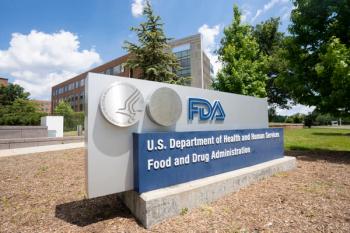
- Pharmaceutical Technology-03-02-2006
- Volume 30
- Issue 3
A Simple Solution for Sensor Drift
Secondary sensors help protect feedback control systems from the effects of sensor drift.
Feedback control systems manage many parameters within the pharmaceutical industry. They're used in heaters, refrigerators, freezers, and stability chambers, among other applications. Pharmaceutical companies also rely on them to control temperature and relative humidity (RH) and to maintain suitable storage, manufacturing, and stability testing environments. What many companies don't realize is that feedback control systems can mask sensor drift. Because the drift usually won't show up on system displays or chart recorders or be detected by system alarms, you may not know there's a problem until stability testing, product quality, or patient health has been jeopardized.
Kevin Bull
Though the consequences of sensor drift can be serious, the solution is surprisingly simple. An independent monitoring system with an independent sensor separate from the feedback control system sensor should be installed. This secondary sensor will monitor and verify proper operation of the system independently and detect potential drift early on.
Feedback control systems rely on sensors to emit a signal proportionate to the parameter to be controlled (e.g., RH). The system compares this signal with a desired setpoint (e.g., 50% RH) and automatically increases or decreases its output to eliminate the gap between the signal and the setpoint. Many systems use a display or recorder, and some feature alarms that indicate when the measured parameter falls outside an established range, but all of these methods are routinely connected to the same control sensor.
In time, if the feedback control sensor is exposed to contamination or degradation, its output signal may become distorted or drift. Because signal drift usually occurs gradually and incrementally, however, it will not be evident on the system display or chart recorder, nor will it trigger system alarms.
Although sensor drift may occur too slowly to be detected, it can occur faster than most calibration cycles. Because sensors drift without any obvious system changes or indications, you likely won't be aware that a problem exists until your operations or products have been compromised. Here's how.
Assume that the desired RH in a stability chamber is 50% and that the system must remain accurate within ±5%. Assume that for every 10% RH, the feedback control system sensor sends a corresponding electric signal of 1 V. So, if the RH is 50%, the sensor sends a 5-V signal. Should the signal be greater than 5.5 V or less than 4.5 V, the alarm will be activated.
If the feedback control sensor drifts, it may send a 5-V signal when the chamber's RH is actually 48%. The drift may worsen over time until the RH is far outside the acceptable range. Yet, because the sensor signal remains at 5 V, the display will continue to indicate 50% RH, and no alarm will activate. The sensor failure will have been masked, and you'll never know.
Though this type of drift occurs in many types of feedback control sensors, it's particularly prevalent in RH measurement. Unlike most other sensors, the internal structure of an RH sensor must be in direct contact with the environment, leaving it vulnerable to dust, airborne chemicals, and other contaminants. Even small levels of contamination can cause significant and permanent drift.
Many industries routinely build in sensor redundancy, but this practice is surprisingly uncommon within the pharmaceutical industry. If your company uses single-sensor feedback control systems, it's vital that you understand the inherent risks and identify the potential effects of an undetected sensor failure on your organization, operations, and reputation.
Kevin Bull is the president and CEO of Veriteq Instruments Inc., Suite 110, 13799 Commerce Parkway, Richmond, BC, Canada V6V 2N9, tel. 800.683.8374, fax 604.273.2874,
Articles in this issue
almost 20 years ago
Custom Manufacturers Target Chiral Chemistry, Catalysis, and Biosciencesalmost 20 years ago
March 2006almost 20 years ago
What is Disinfectant Validation?almost 20 years ago
A Bio-Inspired Approach: Polymorph Farming on a Chipalmost 20 years ago
Mysteries and Mishapsalmost 20 years ago
A New Development ParadigmNewsletter
Get the essential updates shaping the future of pharma manufacturing and compliance—subscribe today to Pharmaceutical Technology and never miss a breakthrough.





